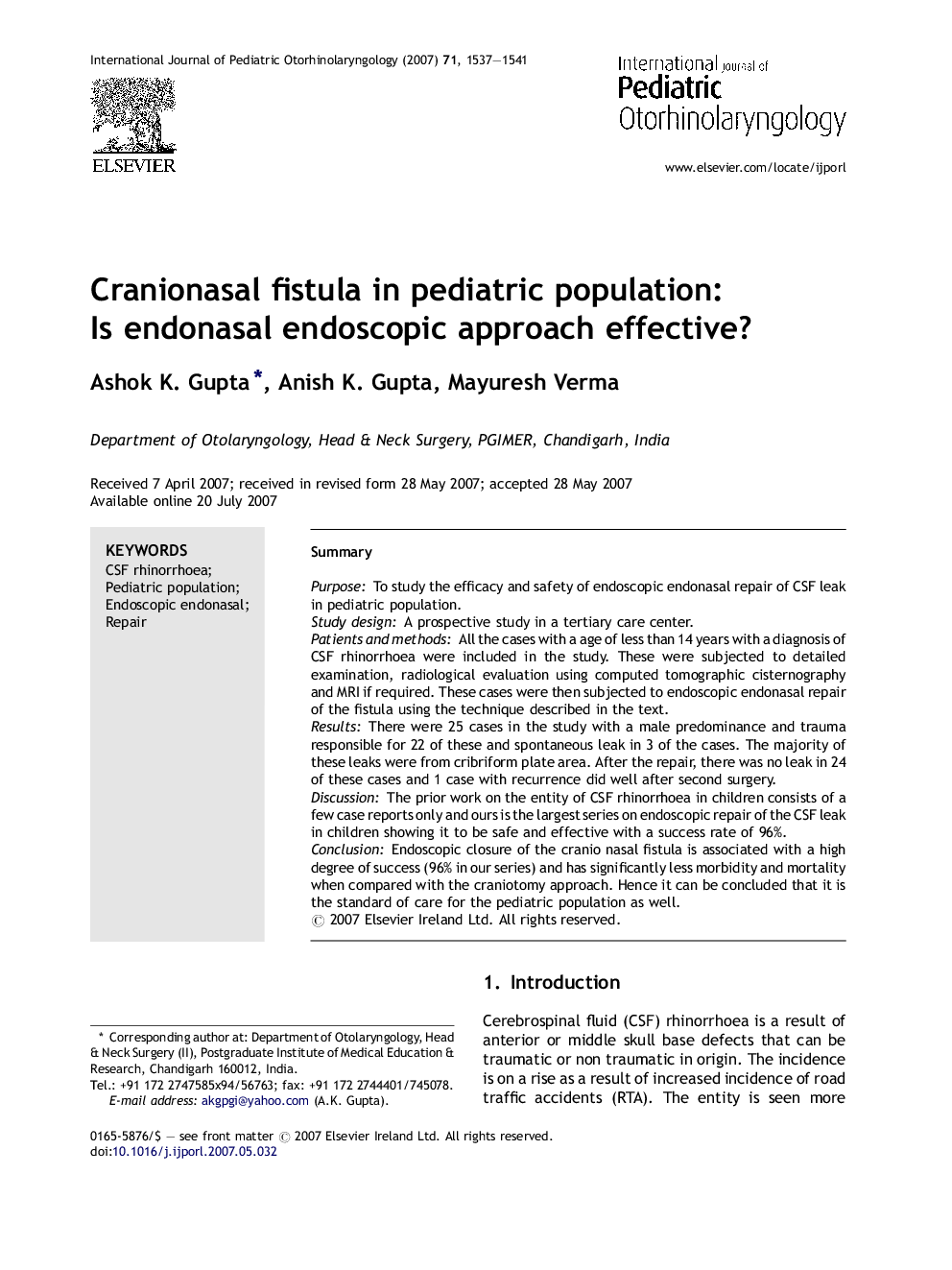| Article ID | Journal | Published Year | Pages | File Type |
|---|---|---|---|---|
| 4113505 | International Journal of Pediatric Otorhinolaryngology | 2007 | 5 Pages |
SummaryPurposeTo study the efficacy and safety of endoscopic endonasal repair of CSF leak in pediatric population.Study designA prospective study in a tertiary care center.Patients and methodsAll the cases with a age of less than 14 years with a diagnosis of CSF rhinorrhoea were included in the study. These were subjected to detailed examination, radiological evaluation using computed tomographic cisternography and MRI if required. These cases were then subjected to endoscopic endonasal repair of the fistula using the technique described in the text.ResultsThere were 25 cases in the study with a male predominance and trauma responsible for 22 of these and spontaneous leak in 3 of the cases. The majority of these leaks were from cribriform plate area. After the repair, there was no leak in 24 of these cases and 1 case with recurrence did well after second surgery.DiscussionThe prior work on the entity of CSF rhinorrhoea in children consists of a few case reports only and ours is the largest series on endoscopic repair of the CSF leak in children showing it to be safe and effective with a success rate of 96%.ConclusionEndoscopic closure of the cranio nasal fistula is associated with a high degree of success (96% in our series) and has significantly less morbidity and mortality when compared with the craniotomy approach. Hence it can be concluded that it is the standard of care for the pediatric population as well.
